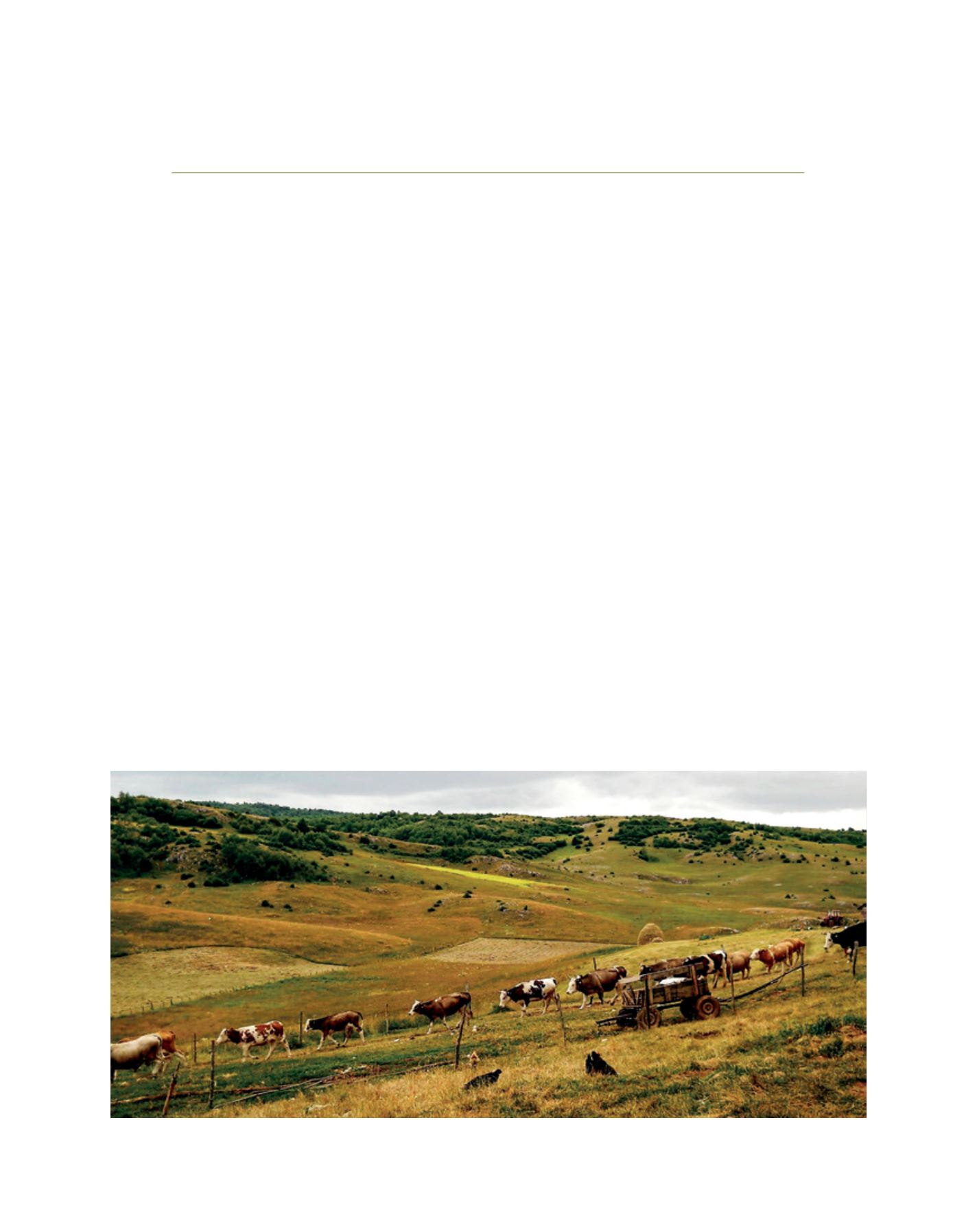

[
] 230
Family farms in the Republic of Serbia
Snezana Bogosavljevi
ć
Boškovi
ć
, Minister,
Aleksandar Bogunovi
ć
& Ljuba Ivanovi
ć, Ministry of Agriculture and Environmental Protection, Serbia
S
erbia has a population of 7.2 million across nearly
78,000 square kilometres of territory. The rural
population accounts for 40.6 per cent of those
people. Agriculture accounts for 21 per cent of Serbia’s
employment, generating €29.6 billion of the country’s
gross domestic product.
Among Serbia’s 631,000 agricultural holdings, 99.5 per cent
are family farms, and 17 per cent of those are held by women.
The average farm size is 5.4 hectares, which is 2.7 less than the
European Union average. Small-scale producers are prevalent
in the livestock sector. Farms of between 2 and 10 hectares
make up the largest share of the country’s farms while hold-
ings of less than 1 hectare account for 29.2 per cent.
The legal framework of agricultural policy and rural devel-
opment in the Republic of Serbia is based on the Law on
Agriculture and Rural Development
1
and the Law on Subsidies
in Agriculture and Rural Development.
2
The Law on Agriculture
and Rural Development foresees that a strategy for agriculture
and rural development of the Republic of Serbia will define
long-term development tendencies in agriculture for the next
10-year period. The National Programme for Agriculture and
Rural Development will determine mid-term and short-term
goals; the means, hierarchy and a time frame for achieving these
goals; anticipated results; and the form, purpose, category and
scope of certain subsidies for a seven-year period.
The Law on Subsidies in Agriculture and Rural Development
prescribes conditions for the creation of consistent and predict-
able long-term agricultural policy. This law defines types of
subsidies such as direct payments, subsidies for rural develop-
ment measures and special subsidies – defining the means of
use and conditions for applying for subsidies, as well as minimal
amounts per subsidy. Subsidies for rural development measures
include support for programmes that apply to investments in
agriculture for the improvement of market competitiveness
and reaching certain standards; sustainable rural development;
enhancement of the rural economy; and the preparation and
implementation of local rural development strategies.
The Ministry of Agriculture and Environmental Protection is
paying special attention to the development of small family farms.
These farms enable the establishment of a sustainable development
system and significantly contribute to the preservation of rural
areas, as well as keeping the population, especially young people,
in the countryside. Therefore theministry has recently adopted the
new Strategy of Agriculture and Rural Development 2014-2020 of
the Republic of Serbia. The strategy took over a year to develop,
with contributions from more than 200 relevant representatives
of the sector, led by Sector Working Groups and Expert Teams.
Small family farms enable the establishment of a sustainable development system and significantly contribute to the preservation of rural areas
D
eep
R
oots
















